Steps to Recovery
Outline of the Miyagi Prefecture Disaster Recovery Plan (formulated in October 2011)
(1) Plan Objectives
The Miyagi Prefecture Disaster Recovery Plan was formulated to set a path for recovery over the following 10 years for the prefecture, which sustained catastrophic damage when the 2011 Great East Japan Earthquake and tsunami struck. The plan is a proposal-driven blueprint for recovery, as the prefecture felt it necessary to design new systems and incorporate new methods to fully recover from the disaster.
(2) Basic Principles
1. To build disaster-resilient communities where people can live with peace of mind
2. Recovery depends upon the concerted effort of citizens as key players
3. Far-reaching reconstruction that does not stop at restoration
4. Progressive regional development to solve issues facing modern society
5. To build a model for recovering from catastrophic damage
(3) Basic Concept
1. Planning Period
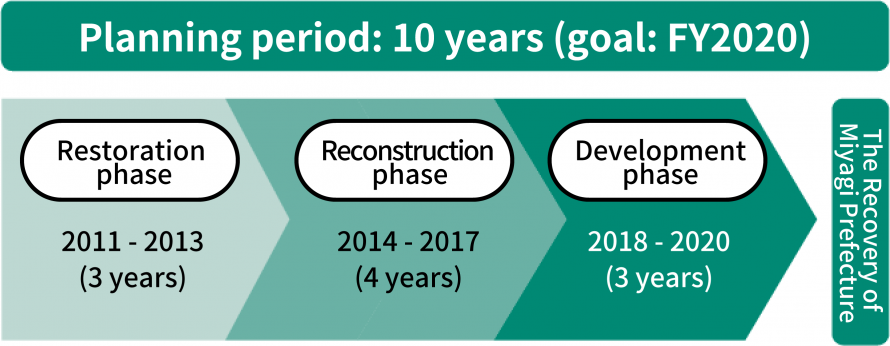 The horizon set to achieve full recovery in the region is approximately 10 years, with fiscal 2020 as the target year. The plan is strategically divided into three phases—Restoration, Reconstruction, and Development. In the restoration phase, the focus will be on supporting victims by restoring the infrastructure needed for daily life and public facilities. In the reconstruction phase, further support will be provided to those affected by the disaster whose lives and businesses have been disrupted. The development phase is for expanding infrastructure to revitalize the prefecture.
The horizon set to achieve full recovery in the region is approximately 10 years, with fiscal 2020 as the target year. The plan is strategically divided into three phases—Restoration, Reconstruction, and Development. In the restoration phase, the focus will be on supporting victims by restoring the infrastructure needed for daily life and public facilities. In the reconstruction phase, further support will be provided to those affected by the disaster whose lives and businesses have been disrupted. The development phase is for expanding infrastructure to revitalize the prefecture.
2. Citizen-led recovery
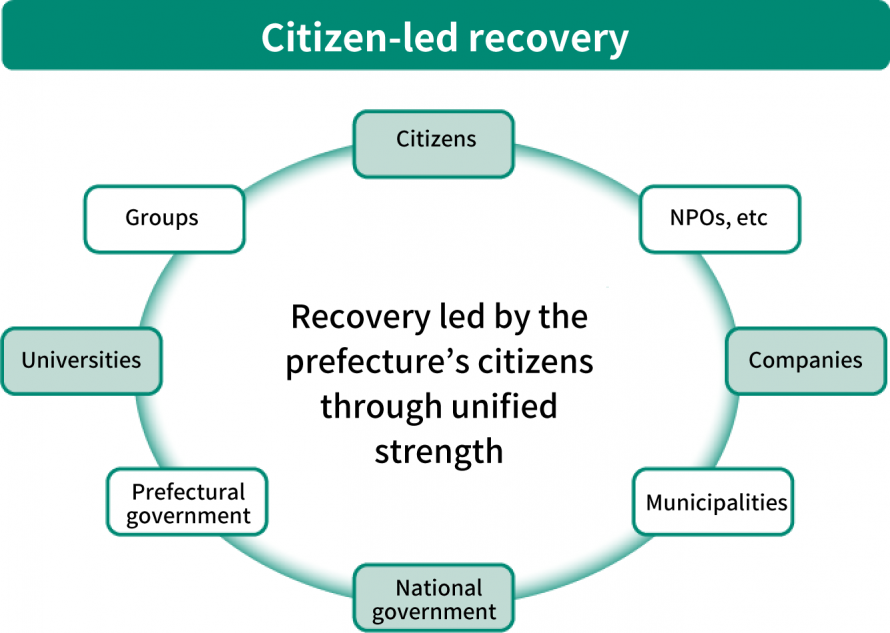 The citizens of the prefecture will lead the recovery, engaging hand in hand with various organizations and forging bonds essential to a full recovery. The government will establish a system that provides full support to the recovery activities initiated by various groups in the private sector.
The citizens of the prefecture will lead the recovery, engaging hand in hand with various organizations and forging bonds essential to a full recovery. The government will establish a system that provides full support to the recovery activities initiated by various groups in the private sector.
3. Targeted area
All parts of the prefecture are covered by the plan. The damaged coastal cities and towns will take priority.
4. Progress management
Progress made on projects will be evaluated using the PDCA (Plan-Do-Check-Act) cycle method and the results will inform specific recovery measures. The plan will be revised as necessary to respond to changes in social conditions and other factors.
(4) Ten Keys to Recovery
Because it is necessary to carry out far-reaching reconstruction that does not stop at merely restoration but extends to progressive regional development, the following 10 items have been identified as keys to recovery that involve initiatives proposed to and requested of the national government which the prefecture will work to achieve in collaboration with its citizens and municipalities.
1. Establish the Miyagi model for disaster-resilient community development
Promote relocation to a higher elevation, separate residential and commercial zones, build multiple barriers to protect against tsunamis, create evacuation centers and safe evacuation routes, support community development, establish a community development process, improve roads to serve as lifesaving routes
2. Rebuild Miyagi’s marine products industry
Collectively reorganize fishing port bases and create a marine products industry area, introduce new operational structures, form a competitive and attractive marine products industry
3. Create advanced agricultural and forestry industries
Develop an innovative model for agriculture and farming communities, support privately funded agricultural businesses, establish green spaces, parks, and other buffer zones, prioritize rebuilding the lumber industry and a vibrant forestry sector
4. Quickly rebuild the manufacturing sector to bring prosperity to Miyagi
Create an economic climate for a rapid resumption of commerce, improve the logistics infrastructure to support business continuity, further promote automobile-related and other industries and attract enterprises, gather and promote emerging industries for the future, create a global industrial area and develop global business, create employment opportunities by promoting new industries
5. Revitalize Miyagi tourism with diverse attractions
Publicize up-to-date tourist information, build an extensive transportation network that assures convenience and safety for tourists, extend the Sendai-Miyagi Destination Campaign through public-private collaboration, attract MICE (conferences and events, etc.), rebuild wide-area sightseeing routes, attract educational travel for disaster research and study
6. Rebuild health, medical care, and welfare services for the region
Establish a well-located network of healthcare and welfare institutions and coordinate their functions, promote medical collaboration through ICT (information and communications technologies), enhance the care system for disaster victims
7. Form eco-towns that utilize renewable energy
Promote eco-friendly community development, develop advanced areas that incorporate smart grids and cogeneration, upgrade all post-disaster public housing with solar power systems
8. Promote disaster-resilient prefectural and national land
Construct a disaster-resistant public utility and logistics system, rebuild the disaster prevention system, develop backup crisis management systems and procedures for the Tohoku region, build the Great East Japan Earthquake Memorial Park (tentative name)
9. Develop human resources to build the future
Enhance mental healthcare and disaster prevention education, promote education that encourages motivation, develop human resources in industries that will assist in Miyagi’s recovery efforts, promote the participation of younger people in recovery planning
10. Establish revenue sources, systems and a collaborative framework to support recovery efforts
Secure necessary revenue sources, integrate private-sector vitality, establish Special Zones for Reconstruction in East Japan, collaborate beyond the boundaries of affected prefectures and municipalities, collaborate with academic and research institutions and think tanks that will lead recovery and regional revitalization efforts
(5) Recovery Efforts in Coastal Areas and the Prefecture as a Whole
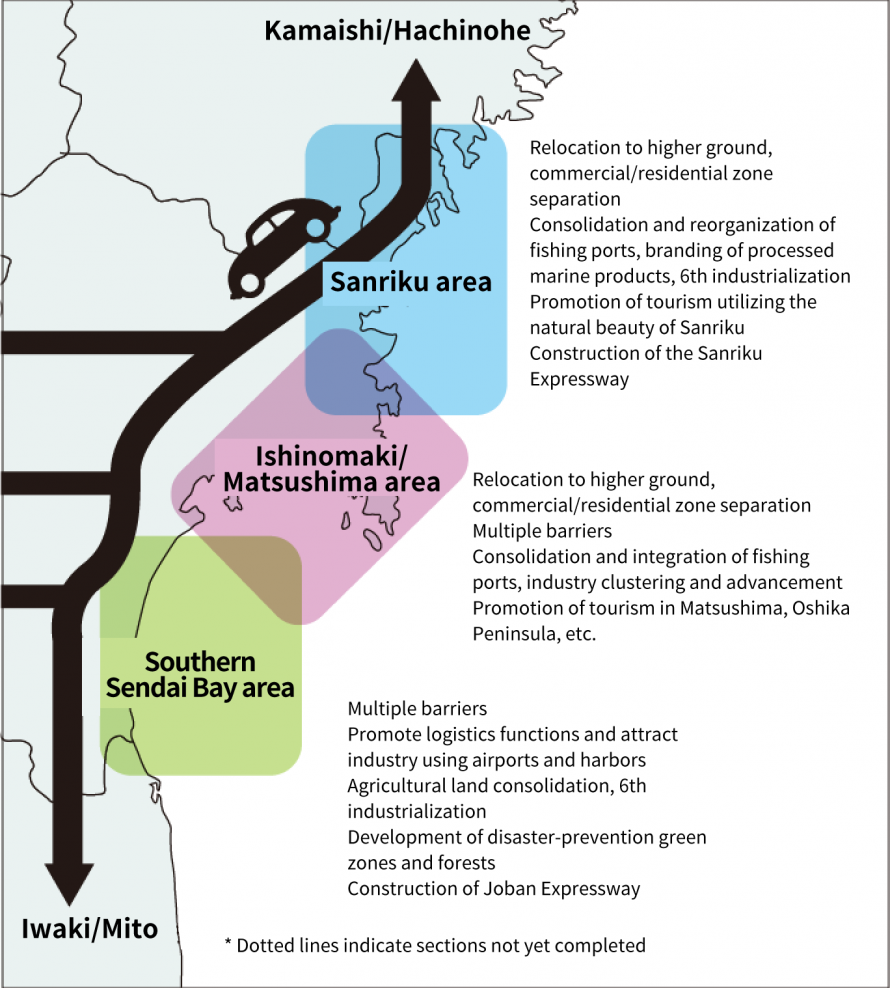
2. Outline of the New Vision for the Future of Miyagi (formulated in December 2020)
(1) Objectives
Three plans—Miyagi Future Vision, Miyagi Prefecture Disaster Recovery Plan, and Miyagi Prefecture Regional Revitalization General Strategy—which were set to expire in fiscal 2020, were reformulated to integrate the principles into a new plan going forward. The New Vision for the Future of Miyagi was created to share with the people of Miyagi a vision of the future and goals for the prefecture in light of anticipated social changes, and to clarify what measures will best serve to achieve them.

(2) Positioning of the vision
The vision offers a basic directional guide for the prefectural government to pursue its plans and initiatives working toward medium-to-long-term goals.
(3) Planning period and target year
The vision is a 10-year vision starting in FY2021, with FY2030 as the target year.
(4) Vigilant support for completion of rebuilding in affected areas
The New Vision for the Future of Miyagi establishes the following four fields of action to provide vigilant support for the completion of rebuilding in affected areas in response to each issue.
| Field 1 | Seamless support based on progress in rebuilding lives | Mental healthcare for disaster survivors, mental healthcare for children and students, revitalization of local communities, emotional recovery through the arts and culture, support and scholarships for orphans of disaster victims, etc. |
|---|---|---|
| Field 2 | Support for industries and livelihoods in the process of recovery | Subsidies for restoration and reconstruction projects to support small and medium-sized enterprises, securing and maintaining employment, tourism promotion, development of marketing channels for agricultural, forestry, and fishery products, and disposal of disaster waste |
| Field 3 | Response to the damage caused by the Fukushima Daiichi Nuclear Power Plant accident | Response to the nuclear disaster (damage compensation claim support, decontamination issues, radiation testing, information dissemination, etc.) |
| Field 4 | Follow-up on reconstruction projects and communication of achievements and lessons learned | Securing staff, disaster research, handing down lessons from the disaster, etc. |
3. Timeline
March
11
Great East Japan Earthquake occurs and Miyagi Prefectural Disaster Task Force is established (14:46)
Request to the Self-Defense Forces for disaster relief operations (15:02)
Prefectural Police Headquarters requests the National Police Agency to dispatch wide-area emergency rescue teams, etc. (15:04)
First meeting of the Disaster Task Force held (15:30)
Request made to the national government for the dispatch of emergency firefighting rescue teams (15:36)
Disaster Relief Act is invoked for all municipalities in the prefecture (17:00)
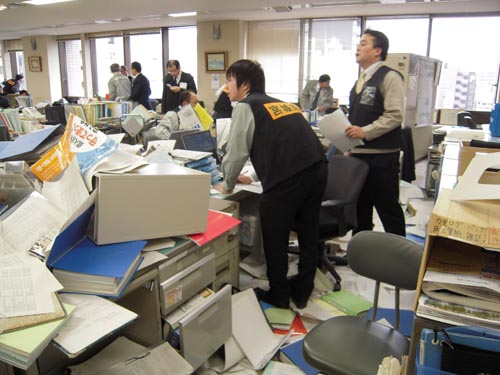
Prefectural Disaster Task Force Headquarters set up on the 5th floor of the prefectural building (photo taken at 15:24)
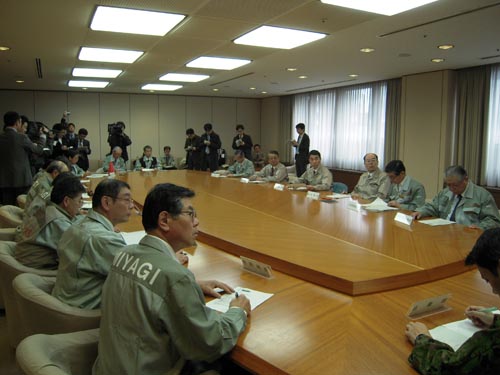
First meeting of the Prefectural Disaster Task Force (photo taken at 15:30)
12
DMAT teams arrive and begin medical activities (work until March 16, 2011)
14
Number of people displaced by the Great East Japan Earthquake in the prefecture peaks at 320,885
15
Number of evacuation centers set up in the prefecture peaks at 1,323 evacuation centers
18
Council on mental health care measures set up (lasts through July 2011)
22
Governor declares reassurance that stable fuel supply is on track
24
Tohoku Expressway reopens to non-essential traffic
28
Prefectural government formulates Basic Policy for Disaster Waste Disposal
5,000-kiloliter oil tanker arrives at Sendai Shiogama Port
30
Sanriku Expressway is fully restored
April
7
M7.1 aftershock occurs offshore from Miyagi Prefecture
11
Draft of the Miyagi Prefecture Basic Disaster Reconstruction Policy is released
13
First domestic non-scheduled flights after the earthquake go into operation at Sendai Airport
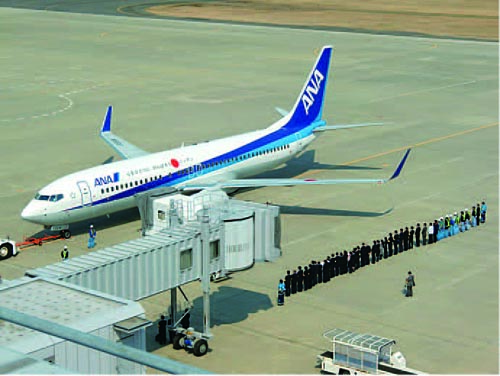
First domestic non-scheduled flights after the earthquake go into operation at Sendai Airport
14
First post-disaster catch sold at the Shiogama Fish Market
1st Reconstruction Design Council in Response to the Great East Japan Earthquake
22
Miyagi Prefecture Disaster Reconstruction Headquarters established
27
Their Majesties the Emperor and Empress visit disaster areas (Minamisanriku Town and Sendai City)
28
Occupancy begins in first prefab emergency housing built in the prefecture (Shiogama City)
29
Disaster Reconstruction Kick-off Day announced
Tohoku Shinkansen Line fully restored
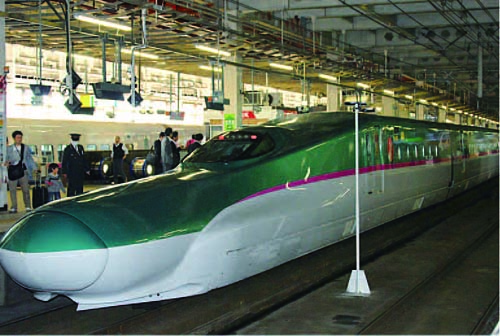
Tohoku Shinkansen Line fully restored
May
2
First Miyagi Prefecture Disaster Reconstruction Council meeting is held
31
Emergency firefighting assistance teams complete their activities in Miyagi Prefecture
June
20
Basic Act on Reconstruction in Response to the Great East Japan Earthquake enacted
25
Reconstruction Design Council in Response to the Great East Japan Earthquake issues “Toward Reconstruction” proposal
July
25
Regular domestic flights resumed at Sendai Airport; non-scheduled international flights also started
29
Basic Policy on Recovery from the Great East Japan Earthquake adopted by the national government
August
1
Self-Defense Forces reconstruction assistance activities are completed
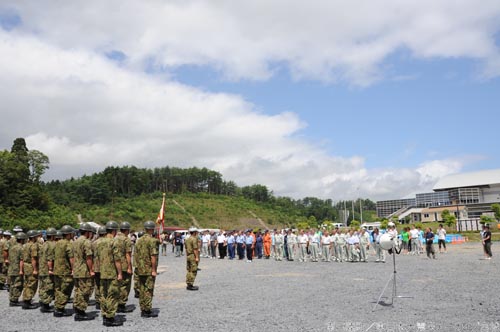
Self-Defense Forces reconstruction assistance activities are completed
10
Construction completed on the prefecture’s first temporary commercial facilities—Shiogama Minato Fukko (Recovery) Market
September
12
Miyagi Citizens’ Council is established in response to the accident at TEPCO’s Fukushima Daiichi Nuclear Power Plant
25
Sendai Airport terminal building is completely restored and regular international flights resume
October
1
Sendai Airport Access Line (railway) resumes full operation
18
Miyagi Prefecture Disaster Recovery Plan is adopted
December
1
Miyagi Prefecture Disaster Recovery Victim Assistance Council is established as part of the Miyagi Prefectural Disaster Task Force
Miyagi Disaster Mental Health Care Center is set up
9
The Act for Establishment of the Reconstruction Agency is enacted into law
11
All essential infrastructure within the prefecture is restored (except in areas completely destroyed by the tsunami)
26
All temporary emergency housing units are completed (22,095 prefabricated units in 406 housing complexes)
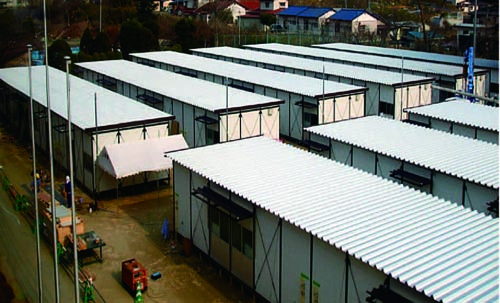
All temporary emergency housing units are completed (22,095 prefabricated units in 406 housing complexes)
30
All evacuation centers in the prefecture close
February
10
Japanese government establishes the Reconstruction Agency; the Miyagi Reconstruction Bureau is established in Sendai City with branch offices in Ishinomaki City and Kesennuma City
March
19
A plan is formulated to deal with the TEPCO Fukushima Daiichi Nuclear Power Plant accident
26
Miyagi Prefectural Disaster Task Force is disbanded
April
1
The position of Disaster Mitigation Officer is created at all prefectural public schools, plus Head Teacher in Charge of Disaster Mitigation at key elementary schools for the first time in Japan
July
18
Guidelines for Miyagi Prefecture Public Emergency Housing are adopted
20
Miyagi approves the Land Readjustment Project for the Recovery of the Shinhebita area in the stricken urban area of Ishinomaki City
August
5
A groundbreaking ceremony is held for the prefecture’s first collective relocation project at Tamaura-nishi area in Iwanuma City
20
The JR Kesennuma Line begins operation using a bus rapid transit (BRT) system connecting Kesennuma City, Minamisanriku Town, and Tome City
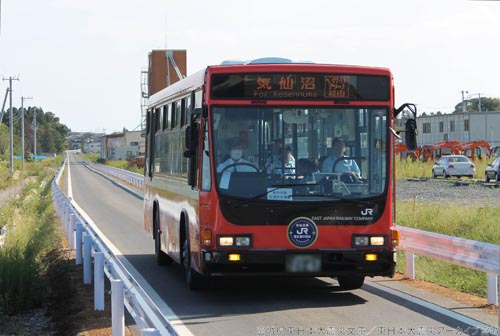
The JR Kesennuma Line begins operation using a bus rapid transit (BRT) system connecting Kesennuma City, Minamisanriku Town, and Tome City
October
18
The Miyagi Prefectural Disaster Victim Recovery Support Council is established
January
29
All 26 waste incinerators in the Koizumi district of Kesennuma are now operational under waste disposal contracts through Miyagi Prefecture
March
25
The Relocation Community Development Project is announced
26
Great East Japan Earthquake Disaster Recovery Fund grants for repairing tsunami damage to housing are delivered to 15 coastal municipalities
April
1
The prefecture’s first public emergency housing in Sendai City, Ishinomaki City, and Yamamoto Town begin accepting residents; a prefectural ordinance is passed to establish Miyagi Memorial Day
26
The Miyagi Prefecture Disaster Waste Disposal Plan (final version) is announced
May
24
Rikuchu-Kaigan National Park is redesignated as Sanriku Fukko National Park
June
20
The Gamo-Zatsukofukuro Disaster Prevention Collective Relocation Area project is completed in Sendai City, the prefecture’s first such project
August
23
A large-scale photovoltaic solar power (megasolar) farm is completed in Nobiru, Higashi-Matsushima City
September
1
A new fishery opens in the special fishery reconstruction zone in Ishinomaki City
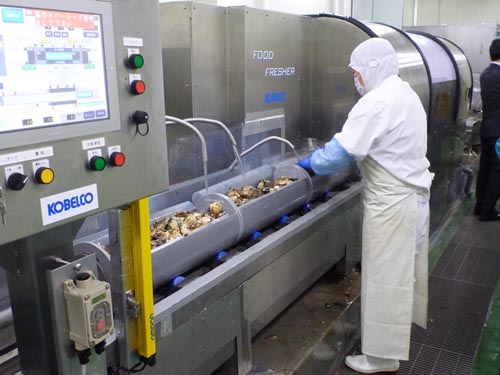
A new fishery opens in the special fishery reconstruction zone in Ishinomaki City
3
Greenhouse complexes for strawberry cultivation are completed and handed over to farm producers in Watari Town
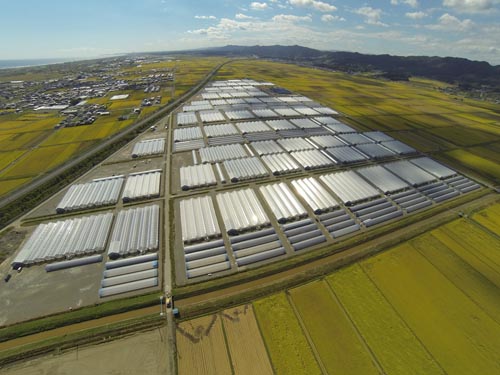
Greenhouse complexes for strawberry cultivation are completed and handed over to farm producers in Watari Town
November
3
Sant Juan Bautista Museum reopens in Ishinomaki City
December
17
The prefecture’s first groundbreaking ceremony is held in Iwanuma City for a reconstruction and land consolidation program for rural communities involved in agriculture, forestry and fisheries
January
18
The incineration of disaster waste ends within the prefecture
February
25
The disposal of disaster waste ends outside the prefecture
March
12
All disposal of disaster waste ends
April
1
A revision to the Earthquake Disaster Countermeasures Promotion Ordinance is enacted
25
The Japanese government finalizes a plan for the privatization of Sendai Airport
30
All closure orders are lifted on prefectural roads in Ishinomaki City and Onagawa Town
July
19
Grand opening of the Shark Museum at “Umi no Ichi” in Kesennuma City
September
30
Dismantling and removal of disaster waste disposal facilities is completed; the land is restored to its original state and returned to the landowners
October
4
Watari Onsen Torinoumi reopens for spa day-trippers in Watari; Kizuna Port Watari opens as a market complex in Watari Town
December
6
Yamamoto Town holds an opening ceremony for new Joban Expressway sections between Yamamoto and Soma Interchanges and between Namie and Minamisoma Interchanges
14
A reopening ceremony is held in Higashi-Matsushima City for the section of railway linking Rikuzen-Otsuka and Rikuzen-Ono Stations on the JR Senseki Line
January
8
A report is submitted by the Miyagi Prefecture Expert Committee on Earthquake Disaster Ruins
March
1
The Joban Expressway is fully opened
14-18
The UN World Conference on Disaster Risk Reduction and a related public forum event are held in Sendai City
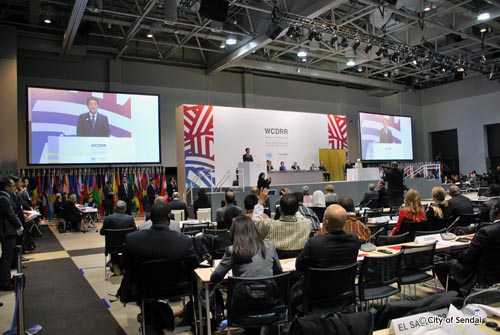
The UN World Conference on Disaster Risk Reduction and a related public forum event are held in Sendai City
21
JR's Ishinomaki Line resumes full service; Onagawa Recovery Town reopening campaign for spring 2015 is held in Onagawa Town
May
30
JR Senseki Line fully restored, goes into operation; Senseki Tohoku Line opens
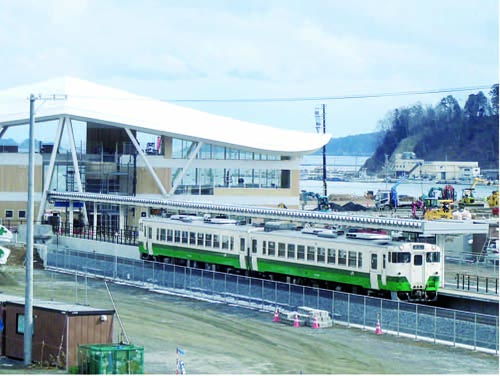
JR Senseki Line fully restored, goes into operation; Senseki Tohoku Line opens
June
15
The Great East Japan Earthquake Archive Miyagi, a digital collection of materials related to the disaster, is published
July
19
Tamaura-nishi officially opens in Iwanuma City as a relocation community for six affected coastal districts
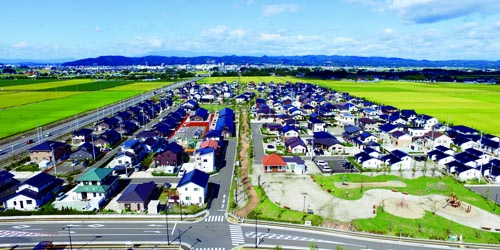
Tamaura-nishi officially opens in Iwanuma City as a relocation community for six affected coastal districts
September
1
Ishinomaki Fish Market resumes full-scale operation in Ishinomaki City
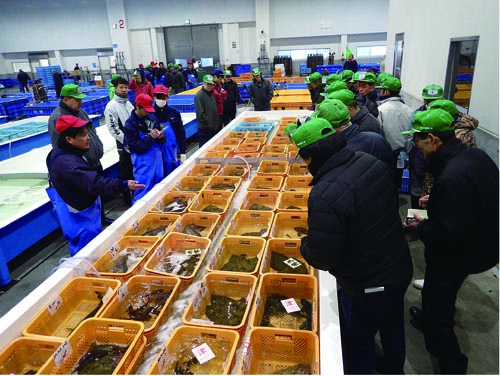
Ishinomaki Fish Market resumes full-scale operation in Ishinomaki City
October
4
Ishinomaki Onagawa Interchange opens on the Sanriku Expressway in Ishinomaki City
The Mitazonokita district opens as a new relocation community in Natori City
November
3
A community opening ceremony is held for the land recovery of five downtown districts in affected areas of Ishinomaki City
December
6
The new Sendai Subway Tozai Line opens in Sendai City
14
The Minamisanriku Hospital and Comprehensive Care Center opens in Minamisanriku Town
23
The Onagawa Station shopping promenade opens, Onagawa Recovery Town reopening campaign for winter 2015 is held in Onagawa Town
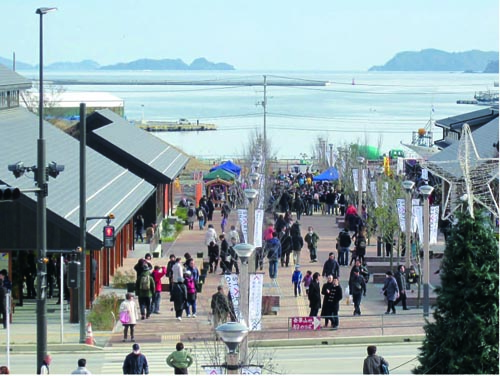
The Onagawa Station shopping promenade opens, Onagawa Recovery Town reopening campaign for winter 2015 is held in Onagawa Town
February
13
The Sendai 3.11 Memorial Community Center opens in Sendai City
March
26
Ishinomakiayumino Station on the Senseki Line opens in Ishinomaki City
27
The four-lane Sen-en Route and the Tagajo Interchange open on the Sanriku Expressway
29
The first hydrogen refueling station in the Tohoku region is planned for Sendai City, and fuel cell vehicles (FCVs) are introduced for prefectural government vehicles
April
1
A Disaster Science Department is established at Tagajo High School in Tagajo City. Tohoku Medical and Pharmaceutical University opens in Sendai City along with its new department of medicine.
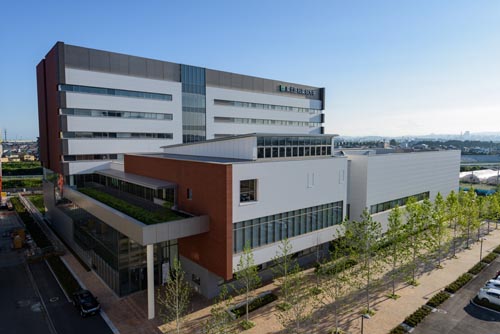
Faculty of Medicine established at Tohoku Medical and Pharmaceutical University (Sendai City)
* Photo courtesy of Tohoku Medical and Pharmaceutical University
16
A section of the Sanriku Expressway opens between the Tome-Towa and Mitakido Interchanges in Tome City
24
The Millennium Hope Hills Exchange Center opens in Iwanuma City
June
1
The Minamisanriku Local Wholesale Market opens in Minamisanriku Town
July
1
Sendai Airport is privatized—a first for a national government-owned airport
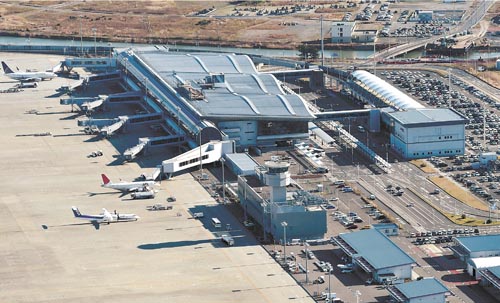
Sendai Airport is privatized—a first for a national government-owned airport
September
1
The Ishinomaki Municipal Hospital opens in Ishinomaki City
24
The Aoi district opens as a new relocation community in Higashi-Matsushima City, celebrated with Aomori Nebuta festival floats
October
1
The Higashi-Matsushima City 3.11 Disaster Recovery Memorial Museum in Higashi-Matsushima City
23
The Tsubamenomori district and Shinsakamoto Station neighborhood district in Yamamoto Town open as new relocation communities
28
Miyagi Prefecture starts helicopter ambulance services, based in Sendai City
30
A section of the Sanriku Expressway opens between Mitakido and Shizugawa Interchanges in Tome City and Minamisanriku Town
December
10
A section of the JR Joban Line between Soma and Hamayoshida reopens in Watari Town
January
9
A new school building is completed in Higashi-Matsushima City for Miyanomori Elementary School, created by merging the disaster-affected Nobiru and Miyato Elementary Schools
March
3
Minamisanriku SANSAN Shopping Village opens on a permanent site in Minamisanriku Town
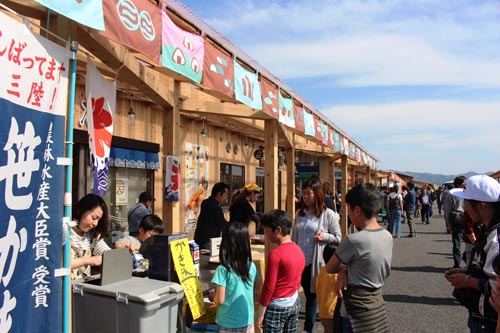
Minamisanriku SANSAN Shopping Village opens on a permanent site in Minamisanriku Town
19
The Shin-Kadonowaki district opens as a new relocation community in Ishinomaki City
20
A section of the Sanriku Expressway opens between Shizugawa and Minamisanriku-kaigan Interchanges in Minamisanriku Town
22
Tohoku's first commercial hydrogen refueling station opens in Sendai City
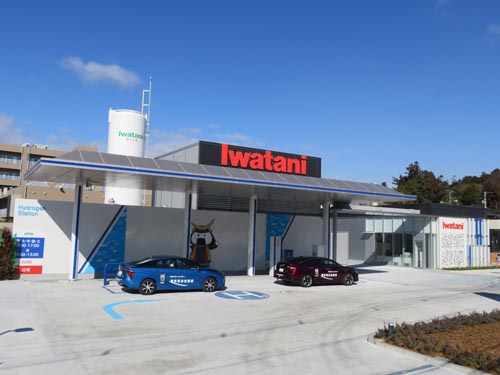
Tohoku's first commercial hydrogen refueling station opens in Sendai City
April
23
Hamare-Utatsu Shopping Area, a reconstructed shopping district in Minamisanriku Town, opens on a permanent site
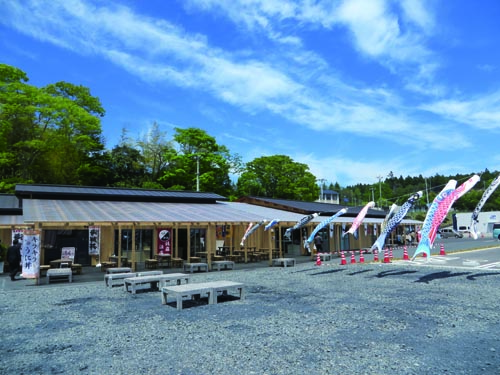
Hamare-Utatsu Shopping Area, a reconstructed shopping district in Minamisanriku Town, opens on a permanent site
29
Matsushima Town Ishidasawa Disaster Prevention Center is completed
30
Ruins of the Great East Japan Earthquake: Sendai Arahama Elementary School opens to the public in Sendai City
May
30
The Onagawa Fish Market is fully restored in Onagawa Town
June
30
The Ishinomaki Genki Ichiba Market tourist facility opens in Ishinomaki City
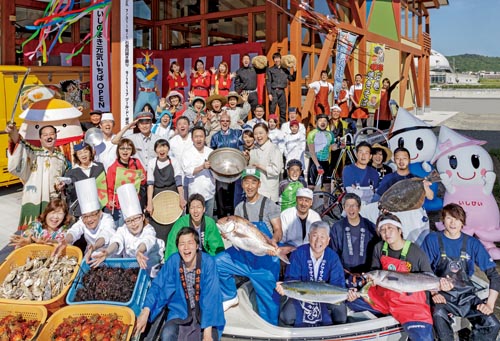
The Ishinomaki Genki Ichiba Market tourist facility opens in Ishinomaki City
July
14
Reconstruction of coastal levees and roads is completed in the Shobuta district and the seaside resort opens fully in Shichigahama Town
15
Sun Ole Sodehama Beach in Minamisanriku Town opens for the first time in seven years
22
Reborn Art Festival 2017, a hybrid event integrating art, music and food, takes place in Ishinomaki City and other locations (until Sept. 10)

July 22–September 10, 2017: Reborn Art Festival 2017 held (Ishinomaki City and other locations)
* Photo: “White Deer” (Oshika) sculpture by artist Kohei Nawa
August
26
A new school building is completed for Ishinomaki Ogatsu Elementary and Junior High School in Ishinomaki City
September
3
Minamisanriku Town Hall reopens in a new building in Minamisanriku Town
30
The Yamamoto Town Disaster Prevention Base/Yamashita Regional Exchange Center completed
October
1
The Tohoku-Miyagi Revive Marathon 2017 takes place in disaster-affected coastal areas of Iwanuma City, Natori City and Watari Town
15
The Nobirugaoka district opens in Higashi-Matsushima City as a new relocation community
25
The Shiogama Fish Market is fully restored in Shiogama City
29
Kesennuma City Hospital is relocated to new premises in Kesennuma City
A tree-planting festival takes place in the Miyauchi district of Tagajo City
November
5
Higashi-Matsushima City 3.11 Disaster Recovery Memorial Park is completed in Higashi-Matsushima City
December
9
A section of the Sanriku Expressway opens between Minamisanriku-kaigan and Utatsu Interchanges in Minamisanriku Town
January
8
A new school building is completed at Naruse Mirai Junior High School in Higashi-Matsushima City
March
24
The Tamaura Kibo Line elevated road opens fully in Iwanuma City
25
A section of the Sanriku Expressway opens between Oya-kaigan and Kesennuma-chuo Interchanges in Kesennuma City
31
Kesennuma City Library and Kesennuma Children’s Center open in Kesennuma City
April
1
Arahama Fishing Port reopens in Watari after renovation in Watari Town
7
The opening ceremony of Yuriage Elementary and Junior High School is held in Natori City, which adopts a new integrated education system
14
Torinoumi Park in Watari Town is completed and an opening ceremony is held
18
A completion ceremony takes place for the disaster victims’ public housing project in Onagawa Town
May
31
The Ishinomaki City Disaster Prevention Center is completed and an opening ceremony is held in Ishinomaki City
July
8
Kaigan Park reopens in the Ido district of Sendai City
12
The Shiogama City Tsunami Disaster Prevention Center opens in Shiogama City
21
Watanoha Beach in Ishinomaki opens for the first time since the disaster in Ishinomaki City
August
24
An opening ceremony is held for a new building completed at Kesennuma Koyo High School in Kesennuma City
September
8
Kawamachi Community Center is completed in Ishinomaki City
October
1
An opening ceremony is held for the newly completed Onagawa Town Hall in Onagawa Town
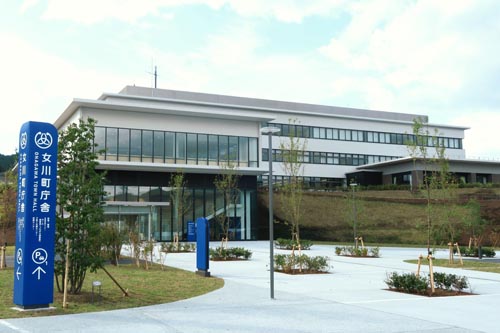
An opening ceremony is held for the newly completed Onagawa Town Hall in Onagawa Town
7
The Kesennuma–Karakuwa Course opens on the Miyagi Olle Trail in Kesennuma City
8
The Oku–Matsushima Course opens on the Miyagi Olle Trail in Higashi-Matsushima City
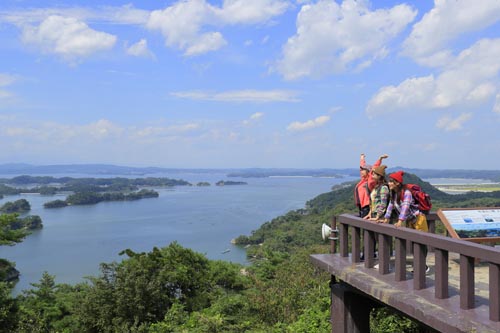
The Oku–Matsushima Course opens on the Miyagi Olle Trail in Higashi-Matsushima City
18
Shizugawa Bay in Minamisanriku Town is designated a Wetland of International Importance under the Ramsar Convention
February
9
Yamamoto Town Farmer’s and Fisherman’s Market “Yamamoto Yume Ichigo-no-Sato” opens in Yamamoto Town
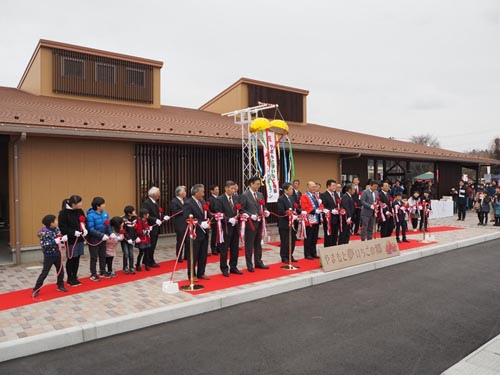
Yamamoto Town Farmer’s and Fisherman’s Market “Yamamoto Yume Ichigo-no-Sato” opens in Yamamoto Town
16
Two sections of the Sanriku Expressway open—between the Utatsu and Koizumi-kaigan Interchanges in Minamisanriku Town, Kesennuma City and between the Motoyoshi-tsuya and Oya-kaigan Interchanges in Kesennuma City
March
10
Ruins of the Great East Japan Earthquake—Kesennuma City Memorial Museum opens in Kesennuma City
31
Construction of all public housing for disaster survivors within the prefecture is completed
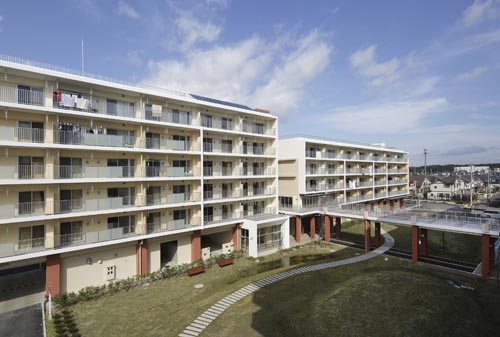
Construction of all public housing for disaster survivors within the prefecture is completed
April
7
An opening ceremony is held for the newly completed Kesennuma Oshima Ohashi Bridge in Kesennuma City
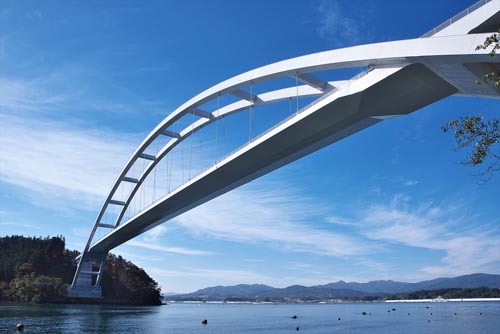
An opening ceremony is held for the newly completed Kesennuma Oshima Ohashi Bridge in Kesennuma City
25
Kawamachi Terrace Yuriage opens in Natori City
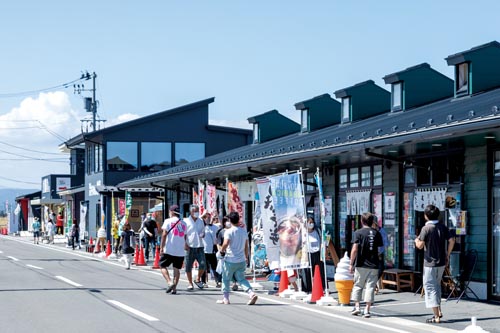
Kawamachi Terrace Yuriage opens in Natori City
May
10
An opening ceremony is held for the newly completed Yamamoto Town Hall
26
The Yuriage district opens in Natori City as a new relocation community
Natori City Earthquake Memorial Park opens
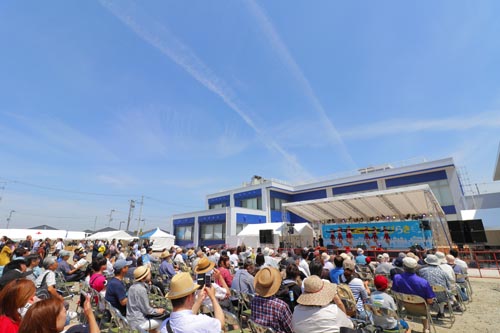
The Yuriage district opens in Natori City as a new relocation community
June
9
The Michinoku Coastal Trail opens in full
July
20
Koizumi Beach in Kesennuma City opens for the first time in 9 years
26
Nodoka, a commercial facility in Kesennuma Oshima Island opens in Kesennuma City
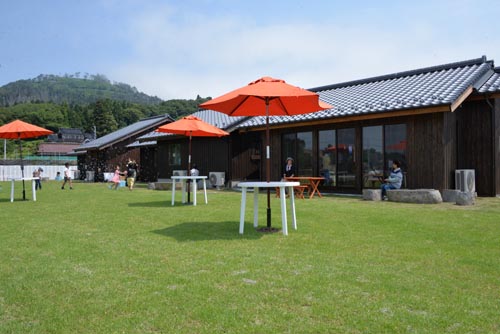
Nodoka, a commercial facility in Kesennuma Oshima Island opens in Kesennuma City
August
2
Ruins of the Great East Japan Earthquake: Residential Foundations in Arahama opens to the public in Sendai City
September
28
The Osaki–Naruko Onsen Course opens on the Miyagi Olle Trail in Osaki City
November
30
The Eastern Reconstruction Road opens in Sendai City
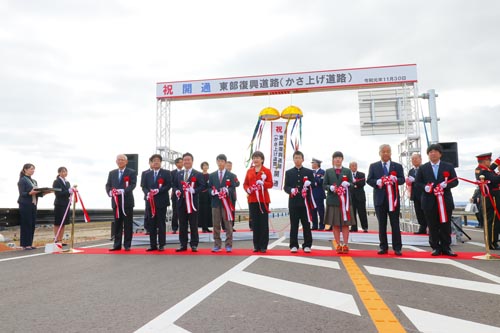
The Eastern Reconstruction Road opens in Sendai City
February
24
A section of the Sanriku Expressway opens in Kesennuma City between the Kesennuma-chuo and Kesennuma-ko Interchanges
29
A completion ceremony is held for the Former Onagawa Police Box Disaster Memorial Ruins in Onagawa Town
March
21
The Tome Course on the Miyagi Olle Trail opens in Tome City
May
30
The Natori City Earthquake Reconstruction Museum opens in Natori City
June
12
Miyagi Prefecture’s new automatic sluice and flood gate system goes into operation
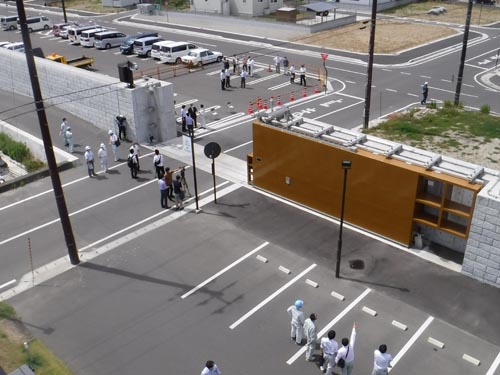
Miyagi Prefecture’s new automatic sluice and flood gate system goes into operation
July
18
Grand opening of Naiwan, a commercial facility in Kesennuma City
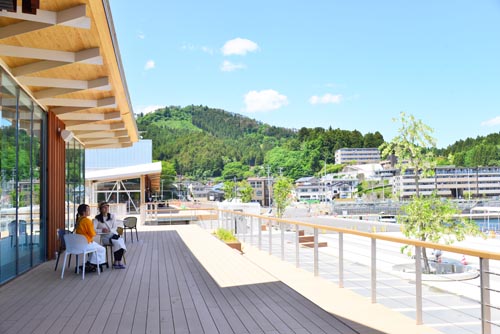
Grand opening of Naiwan, a commercial facility in Kesennuma City
September
10
The Utsumi-bashi Bridge along Japan National Route 398 opens in Ishinomaki City
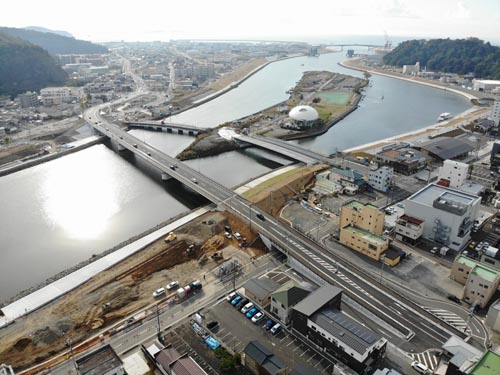
The Utsumi-bashi Bridge along Japan National Route 398 opens in Ishinomaki City
26
Yamamoto Town Ruins of the Great East Japan Earthquake: Nakahama Elementary School open to the public in Yamamoto Town
October
3
Grand opening of the Natori Cycle Sports Center in Natori City
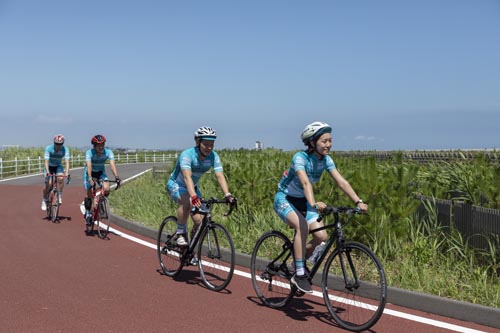
Grand opening of the Natori Cycle Sports Center in Natori City
12
Minamisanriku Earthquake Disaster Memorial Park opens fully in Minamisanriku Town
25
Peach Aviation opens the first low-cost air route between Sendai and Naha
November
21
A section of the Sanriku Expressway opens in Kesennuma City between the Koizumikaigan and Motoyoshi-tsuya Interchanges
December
The New Vision for the Future of Miyagi is formulated
March
6
A section of the Sanriku Expressway opens in Kesennuma City between the Kesennuma-ko and Karakuwa-hanto Interchanges; Kesennuma Bay Crossing Bridge opens
11
Kesennuma City Earthquake Disaster Memorial Park opens in Kesennuma City
18
JR Fruits Park Sendai Arahama opens in Sendai City
28
Ishinomaki Minamihama Tsunami Memorial Park opens in Ishinomaki City
The Oya kaigan Michi-no-Eki Roadstation opens in Kesennuma City
April
3
Onagawa Michi-no-Eki Roadstation opens in Onagawa Town
8
A new school building is completed at Naruse-Oka Elementary School in Higashi-Matsushima City
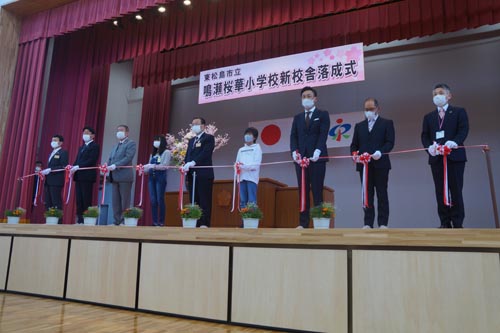
A new school building is completed at Naruse-Oka Elementary School in Higashi-Matsushima City
June
6
Miyagi 3.11 Tsunami Disaster Memorial Museum opens in Ishinomaki City
19 - 21
The 2020 Tokyo Olympics torch relay passes through various places in the prefecture
July
16
Ibex Airlines inaugurates a route between Sendai and Ehime
18
Ishinomaki City Okawa Elementary School Ruins open to the public in Ishinomaki City
August
19
Mash Park Onagawa opens in Onagawa Town
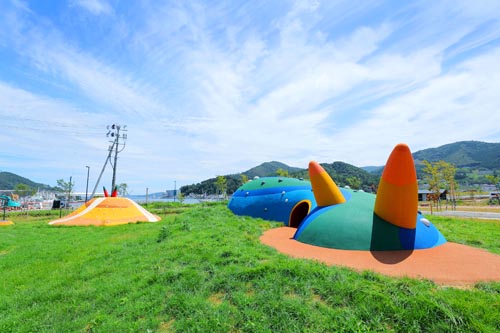
Mash Park Onagawa opens in Onagawa Town
October
3
The 40th National Convention for the Development of an Abundantly Productive Sea—Miyagi, the Food Kingdom—takes place in Ishinomaki City
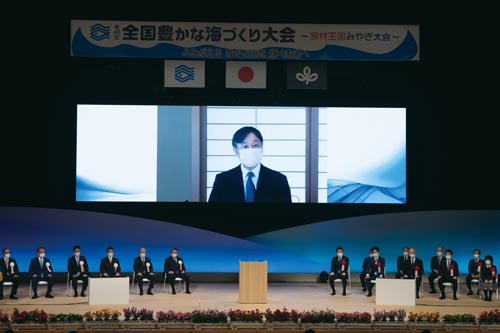
The 40th National Convention for the Development of an Abundantly Productive Sea—Miyagi, the Food Kingdom—takes place in Ishinomaki City
March
30
An opening ceremony is held for the Ishinomaki City Kadonowaki Elementary School Ruins in Ishinomaki City
April
1
Onagawa Stadium Park opens in Onagawa Town
21
AQUAIGNIS SENDAI opens in Sendai City
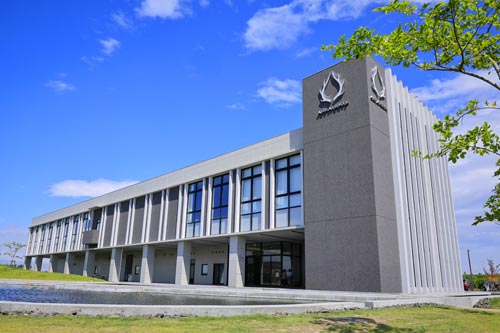
AQUAIGNIS SENDAI opens in Sendai City
July
16
Oisehama Beach in Kesennuma City opens for the first time in 12 years
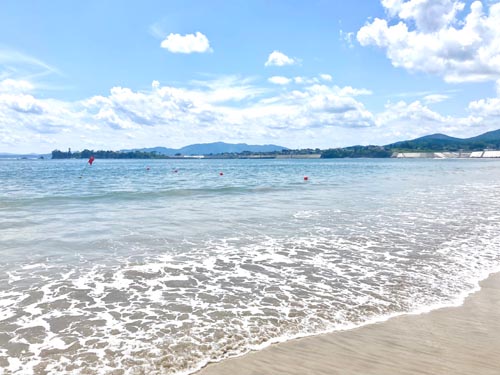
Oisehama Beach in Kesennuma City opens for the first time in 12 years
20
Nobiru Beach in Higashi-Matsushima City opens for the first time in 12 years
October
1
The Minamisanriku 311 Memorial opens in Minamisanriku Town
November
1
A ceremony is held to celebrate the 150th anniversary of Miyagi Prefecture
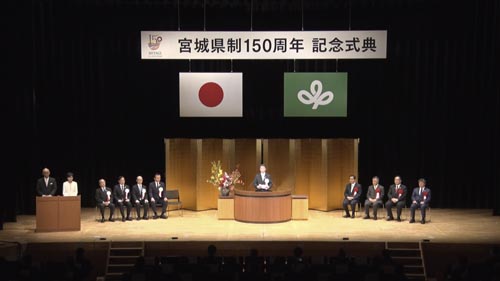
A ceremony is held to celebrate the 150th anniversary of Miyagi Prefecture